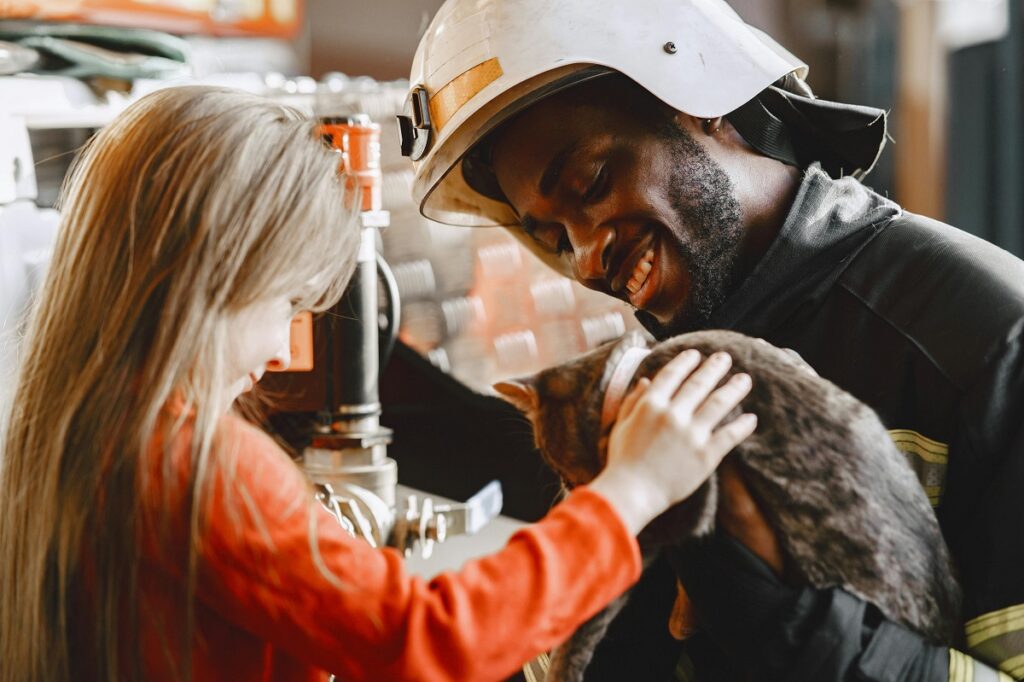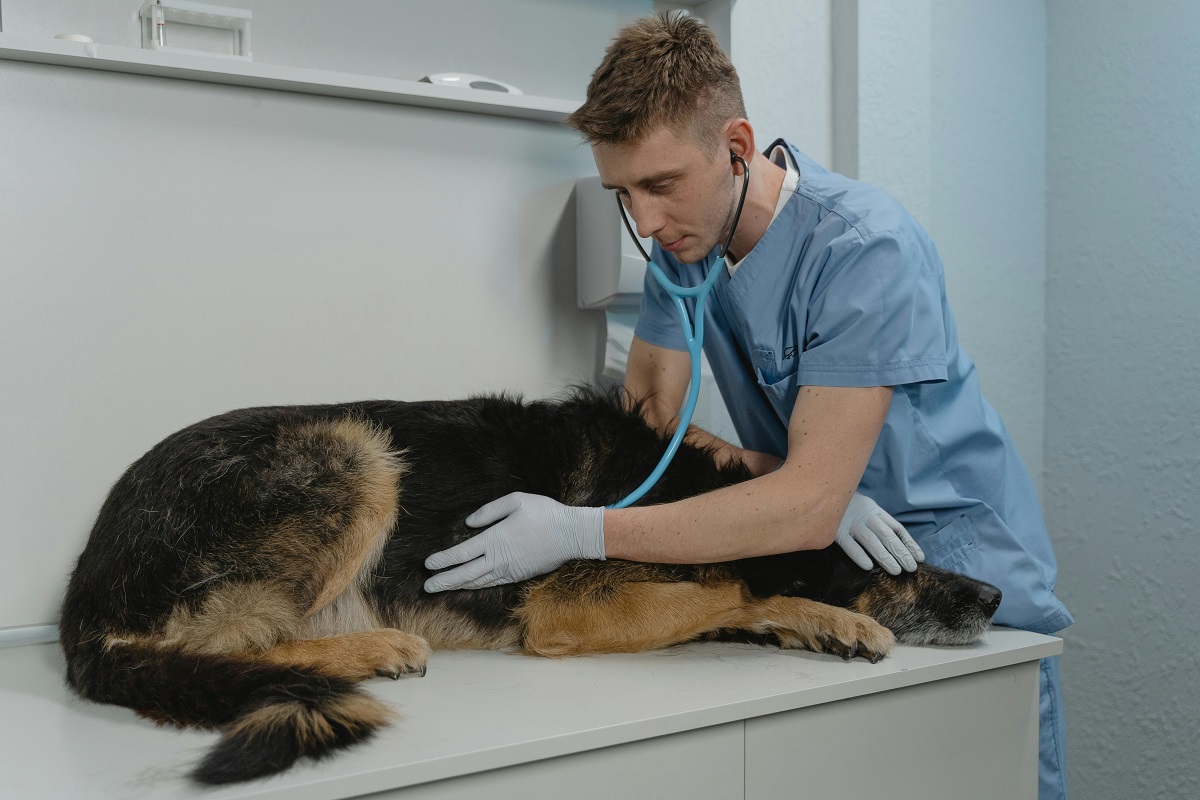Pets are cherished members of our families, and their health and safety are a top priority. However, emergencies can happen anytime, and being prepared can make all the difference in ensuring your pet’s well-being. Whether it’s an injury, illness, or accidental poisoning, knowing how to respond quickly and effectively can save your pet’s life. This guide will cover common pet emergencies, how to handle them, and steps to take to ensure your pet receives the care they need.
Common Pet Emergencies

Choking
Choking occurs when an object blocks your pet’s airway, making it difficult or impossible for them to breathe. Signs of choking include:
Pawing at the mouth
Gagging or retching
Difficulty breathing
Blue-tinged gums or tongue
What to Do
Stay calm and approach your pet carefully.
Open their mouth and check for any visible obstructions. If you can see the object, try to remove it with your fingers or tweezers (be cautious to avoid pushing it further down).
If the object is not visible or cannot be removed, perform the Heimlich maneuver for pets:
For small pets: Hold them upside down and gently shake them.
For larger pets: Place your hands just behind their ribcage and apply quick, firm pressure upward.
Seek immediate veterinary care, even if the object is removed.
Poisoning
Pets can accidentally ingest toxic substances, such as household chemicals, medications, or certain foods (e.g., chocolate, grapes, onions). Signs of poisoning include:
Vomiting or diarrhea
Drooling
Lethargy
Seizures
Difficulty breathing
What to Do
Remove your pet from the source of the toxin.
Identify the substance ingested and immediately contact your veterinarian or a pet poison helpline.
Do not induce vomiting unless instructed by a professional.
Bring a sample of the toxin or its packaging to the vet for identification.
Injuries (Fractures, Cuts, or Burns)
Pets can suffer injuries from accidents, fights, or falls. Signs of injury include:
Limping or inability to walk
Swelling or bruising
Bleeding
Visible wounds or burns
What to Do
For bleeding: Apply gentle pressure with a clean cloth or bandage to stop the bleeding.
For fractures: Immobilize the injured area using a splint or towel, and avoid moving your pet unnecessarily.
For burns: Rinse the affected area with cool water and cover it with a clean, damp cloth.
Seek veterinary care immediately.
Heatstroke
Heatstroke is a life-threatening condition that occurs when a pet’s body temperature rises to dangerous levels. It is common in hot weather or when pets are left in cars. Signs of heatstroke include:
Excessive panting
Drooling
Bright red gums
Vomiting or diarrhea
Collapse
What to Do
Move your pet to a cool, shaded area.
Offer small amounts of cool (not cold) water.
Use a damp cloth or towel to cool your pet’s body, focusing on the head, neck, and paw pads.
Avoid using ice or very cold water, as this can cause shock.
Seek veterinary care immediately.
Seizures
Seizures can be caused by epilepsy, toxins, or underlying health conditions. Signs of a seizure include:
Uncontrollable shaking or twitching
Loss of consciousness
Drooling or foaming at the mouth
Loss of bladder or bowel control
What to Do
Stay calm and keep your pet away from objects that could harm them.
Do not try to restrain your pet or put anything in their mouth.
Time the seizure and note any details to share with your vet.
After the seizure, keep your pet calm and comfortable.
Seek veterinary care, especially if the seizure lasts more than a few minutes or if it’s the first time your pet has had a seizure.
Difficulty Breathing
Breathing difficulties can result from allergies, infections, or heart problems. Signs include:
Rapid or labored breathing
Wheezing or coughing
Blue-tinged gums or tongue
Open-mouth breathing (in cats)
What to Do
Keep your pet calm and minimize stress.
Ensure they have access to fresh air.
Seek immediate veterinary care.
Bloating (Gastric Dilatation-Volvulus)
Bloating is a life-threatening condition, especially in large dog breeds. It occurs when the stomach fills with gas and twists, cutting off blood flow. Signs include:
Swollen or distended abdomen
Unsuccessful attempts to vomit
Restlessness or pacing
Rapid breathing
Collapse
What to Do
Seek emergency veterinary care immediately. Bloating requires urgent medical intervention.
Preparing for Pet Emergencies
Create a Pet First Aid Kit
Having a well-stocked first aid kit can help you respond quickly in an emergency. Include the following items:
Gauze pads and bandages
Tweezers
Antiseptic wipes
Hydrogen peroxide (for inducing vomiting, only if instructed by a vet)
Thermometer (pet-specific)
Blanket or towel
Muzzle (to prevent biting if your pet is in pain)
Know Your Nearest Emergency Vet
Locate the nearest 24-hour emergency veterinary clinic and keep their contact information handy. In an emergency, time is critical.
Learn Basic Pet CPR
Knowing how to perform CPR on your pet can be lifesaving. Many organizations offer pet CPR courses, or you can find instructional videos online.
Pet-Proof Your Home
Prevent emergencies by keeping hazardous substances, small objects, and dangerous foods out of your pet’s reach. Ensure your home and yard are secure to prevent accidents.
When to Seek Veterinary Care
If you’re unsure whether your pet’s condition is an emergency, it’s always better to err on the side of caution. Contact your veterinarian or an emergency clinic if you notice any of the following:
Severe bleeding
Difficulty breathing
Loss of consciousness
Seizures
Suspected poisoning
Severe pain or distress
DIY Pet Grooming How to Keep Your Pet Clean and Happy at Home
Conclusion
Emergencies can be stressful, but being prepared and knowing how to respond can make a significant difference in your pet’s outcome. By understanding common emergencies, creating a first aid kit, and having a plan in place, you can ensure your pet receives the care they need when it matters most. Remember, your veterinarian is your best resource for guidance and support in any emergency. Stay calm, act quickly, and prioritize your pet’s safety and well-being.

